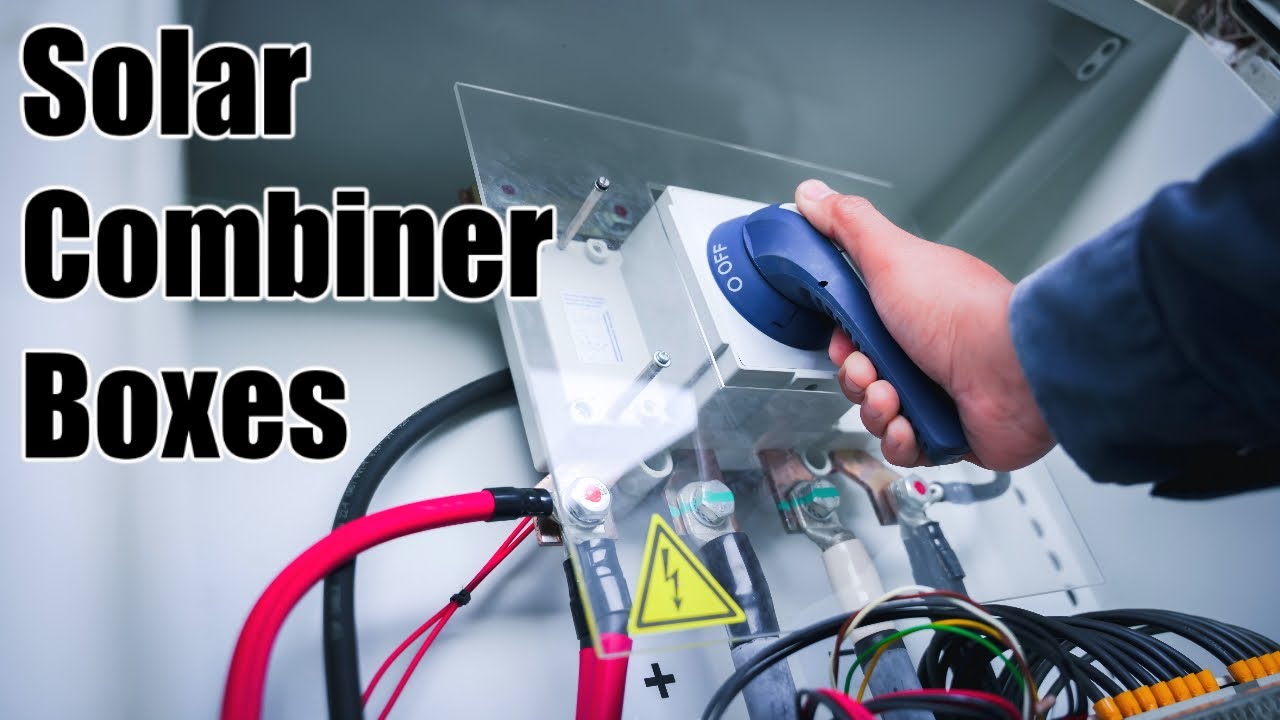PV Combiner Box: Many people worry about their energy bills going up and the fact that solar energy is cheap. On the other hand, solar panels often have the same way of wiring and connecting them. Putting connections for several solar panels into a single pack is a difficult task.
It is possible to do a lot of damage without knowing how links work. It would help ensure the cables are properly hooked up and working. Many people don’t know how to put together a lot of panels. It’s inconvenient and takes a lot of time.
What is PV Combiner Box?
The photovoltaic combiner box is an innovative technology. Using a PV combiner box schematic, you can combine the power from several solar panels into a single source. This way, people can get more energy from the sun for their homes and businesses.
Solar photovoltaic array combiners, also called “solar panel combiner boxes,” are often used to connect several solar panels (or strings of panels) to a single bus. Simply put, these junction boxes have been changed to fit the types of wiring used in PV systems. Furthermore, Array combiners are usually used in larger systems, but they may be useful in small PV systems for wiring, monitoring, and troubleshooting in the future.
To save space, a PV system may use a custom mount box called a “combiner box” to hold more than one panel at once. It makes it easier to change a storage space that is already there.
What Is the Function of a PV Solar Combiner Box?
This PV combiner box design is to add power from many solar panels. Each string conductor is connected to a fuse terminal, and the box’s output is combined into a single wire that goes to the inverter. Even though this combiner box is the most basic type, it often has extra functions when added to a solar energy system. Some examples of extra hardware are disconnect switches, monitoring tools, and fast shutdown devices that can be turned off from a distance.
In this way, it’s like a junction box, a type of electrical box that connects wires or cables that come in from different places. A solar PV combiner box component takes power from many PV module strings and sends it to an inverter. Most of the time, this is where the input overcurrent protection fuses for many strings are. Also, There could be anywhere from three to fifty-two strings.
Solar combiner boxes can also hold string monitoring equipment, surge protectors, and DC disconnects. Before choosing the best solar combiner box, it’s important to know where the work will be done and how hard it will be. You should also understand the other parts and how they work with the combiner.
Features of a PV Combiner Box
These things are true of and can be done with PV combiner boxes:
-
IP65 Enclosure
With a combiner box, the open-circuit voltages of solar panels connected in series can be boosted and insulated. The enclosure keeps dirt, dust, and the outside from getting into the PV box.
The IP65 rating means that water can’t get into the container from any direction.
-
Change the voltage of the direct current.
Up to 1000 volts of power can go through the PV combiner box. Most of the time, this method works well for most jobs. In other situations, a mix of solar panels with different voltages is needed.
The maximum voltage the PV combiner box can handle can be changed from 500V to 1000V.
-
High and low-temperature resistance
The photovoltaic combiner box will not break in temperatures from -22 to 55 degrees Celsius. The PV combiner box can be put in places like rooftops where it is constantly exposed to the elements.
It is made to last in harsh environments without rusting or breaking.
-
Several strings integrations
One to three standard connectors might be part of a 4 string PV combiner box with a combiner box. DC disconnects can be put on the PV strings to protect them from too much current.
To keep PV modules from getting damaged, set the circuit to open at a certain current level.
Different Types of PV Combiner Boxes
The solar combiner box can be set up in two different ways.
1. Iron body combiner box
The iron-body PV combiner box is strong, easy to move, and can handle high voltage. It stops dangerous voltage spikes and lightning strikes from hurting the circuit.
It is very reliable because it is made of an iron sheet that has been sprayed. As a bonus, its small size makes it easy and cheap to put together. As a result, it cuts manufacturing costs and makes the setup process easier.
2. Plastic body combiner box
The plastic body of the combiner box has great mechanical properties and a high level of insulation. It is easy to put together and doesn’t need much care and maintenance. This material doesn’t rust or corrode.
You don’t have to worry about corrosion if you clean the layer that does the work. It can be used both when it is hot and when it is cold. Also, A PV combiner box may keep the environment, dust, and other possible dangers away from the electrical parts of a PV system.
Advantages of Solar Panel Combiner Box
Some of the good things about it are:
-
Protection against lightning and power surges
Lightning is a big problem for any electrical system. It could affect how well your PV system works as a whole. Because of this, they will have a higher chance of failing. Lightning can do much damage, but the solar PV array combiner box keeps this from happening.
The voltage of the main circuit can now be filtered. It also decides how much power can pass through. It will keep your equipment from getting damaged when lightning strikes up to 1000V DC.
-
Make solar panels safer.
Solar panels are vulnerable to damage because they are out in the open and can be hurt by bad weather, natural disasters, and careless people. A PV combiner box or other similar electrical connection could be made much more efficient.
The solar panels you have will last longer. A combiner box makes solar panels safer when used as part of a photovoltaic system. It keeps both natural and artificial dangers away from important parts and connections.
-
Less expensive
Compared to the usual method of connecting PV modules in series and parallel, this setup has some advantages. Each panel needs to be connected with wires. It could also make fires less likely. It makes it less likely that shorts and open circuits will happen by accident.
PV combiner boxes make it easier to connect wires. If you want to replace an old power supply with this one, it will cost you a little more. Routing and mounting can usually be used again.
-
Several panel connector Enclosure
The box for the connection panel can be set up in some ways. It uses little energy, plugs in, and links solar panels. You can crimp the semi-rigid cable to the panel bolts with clamps.
Moreover, This makes it easier and faster to put together a PV system. It makes it possible to replace or add panels to already set-up arrays. It comes in different shapes and sizes (2-way, 8-way, 10-way, and 24-way).
-
Simple and easy-to-use interface
This means anyone can figure out how to use the photovoltaic combiner box just by looking at it. The designs are set up in a way that makes sense and is consistent.
Hence, Anyone who knows how the system works knows what it means. You can control the power coming in, for example, by turning certain phases on and off.
Conclusions
Keep the above information in mind when choosing a combiner box for your solar system. Moreover, A solar system might be worth a few dollars more if it has a solar combiner box. Because of this, fewer wires, faster disconnects, more safety and security, and more work gets done. Additionally, It’s hard to imagine someone who wouldn’t want one of these in their home. It has all the benefits and setting it up only takes a few minutes.


